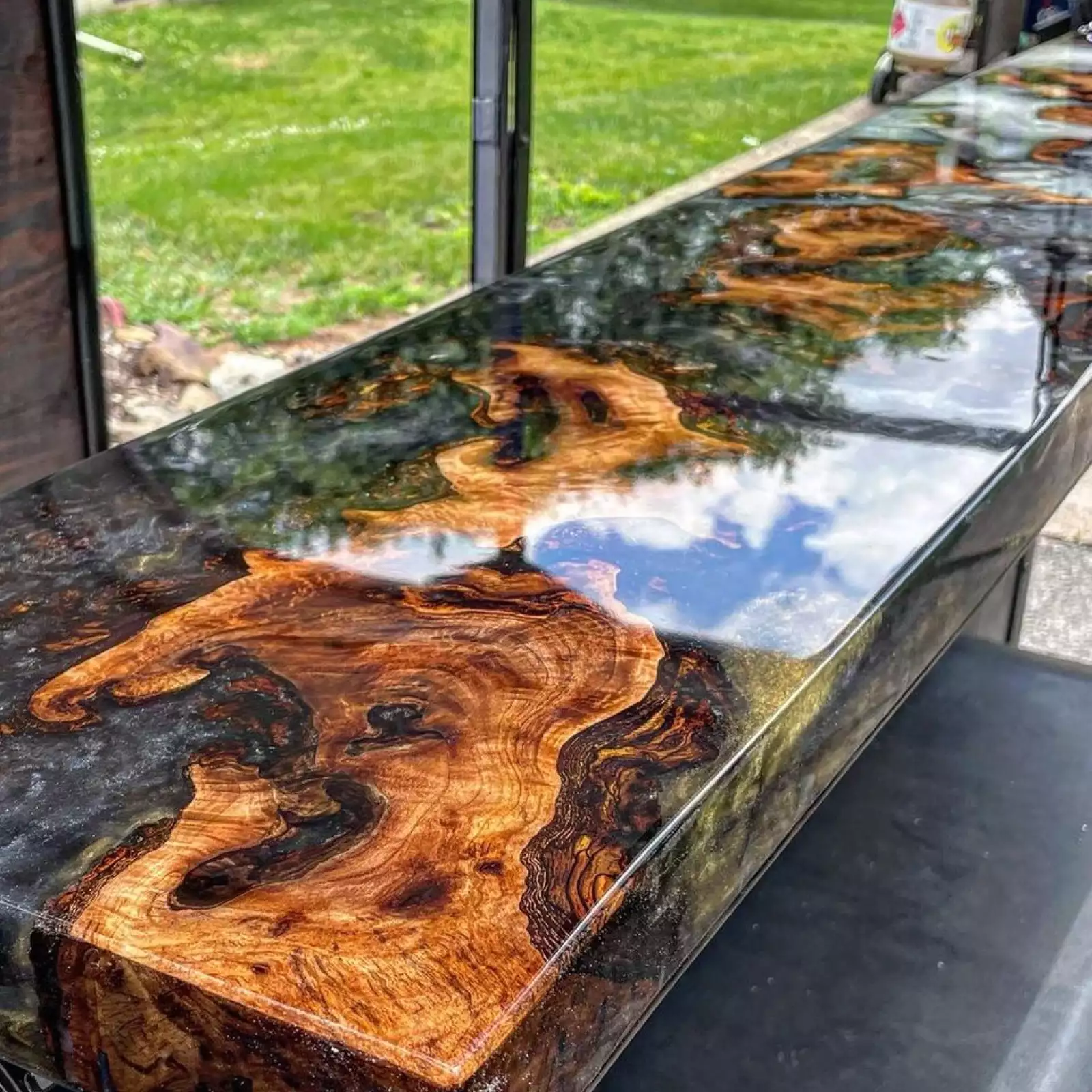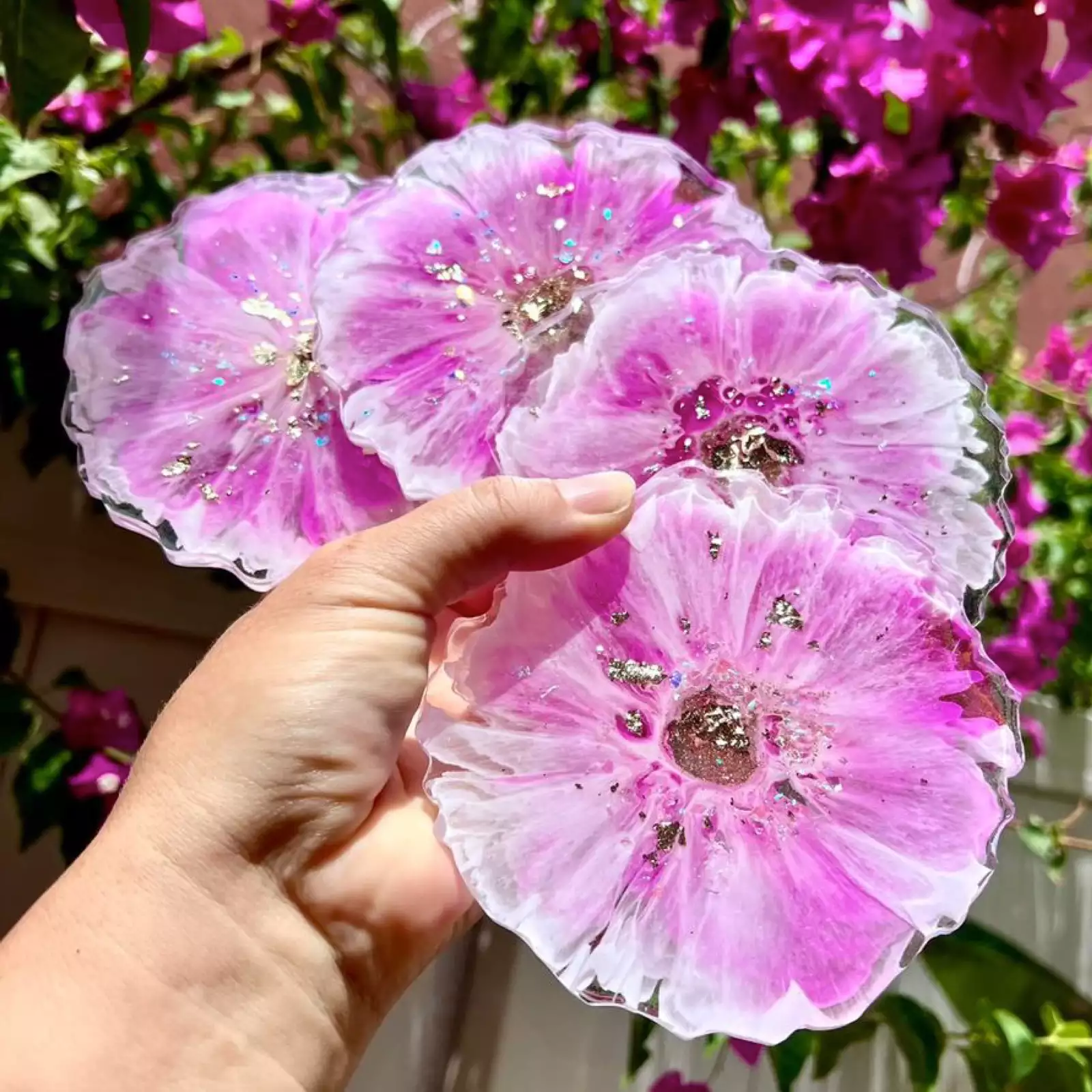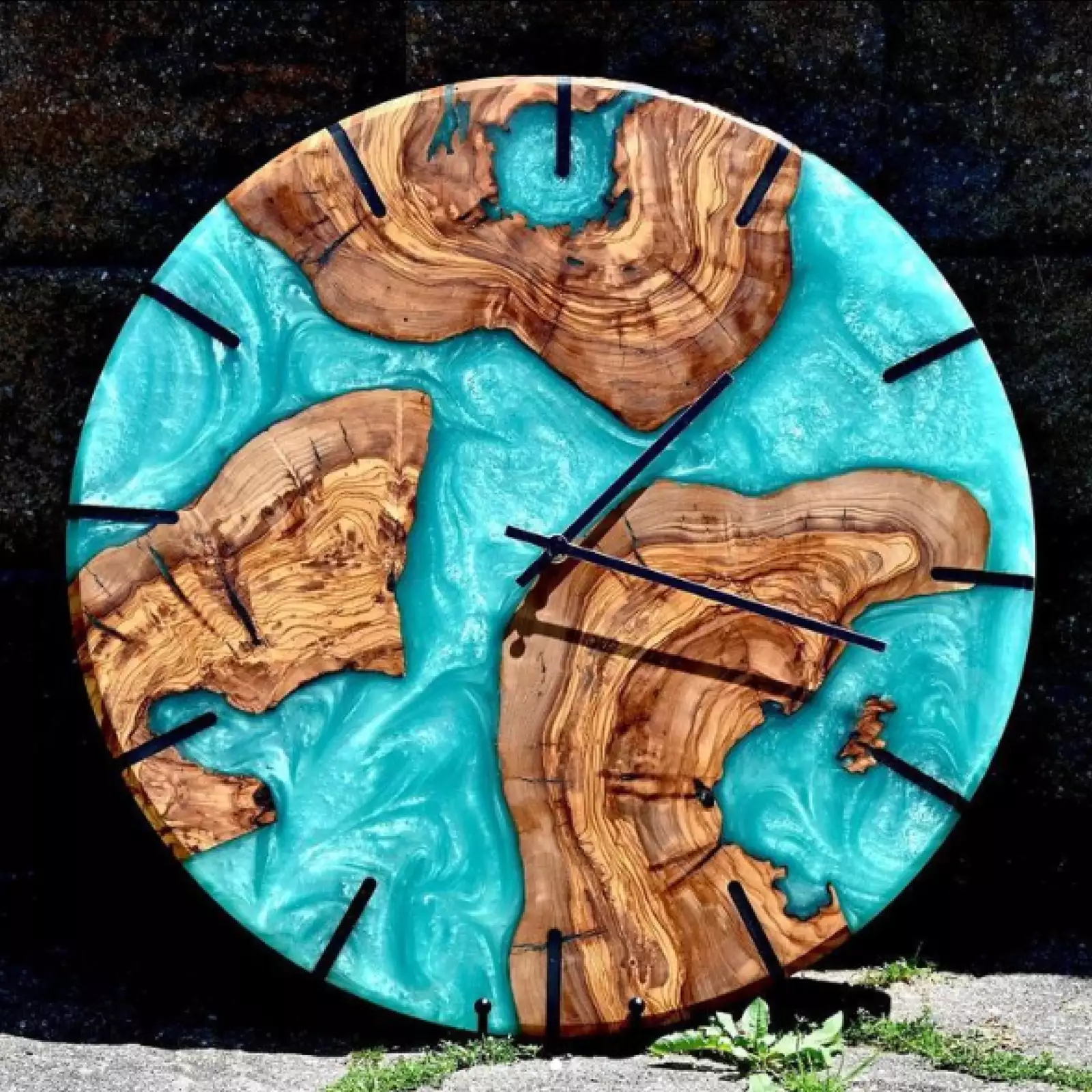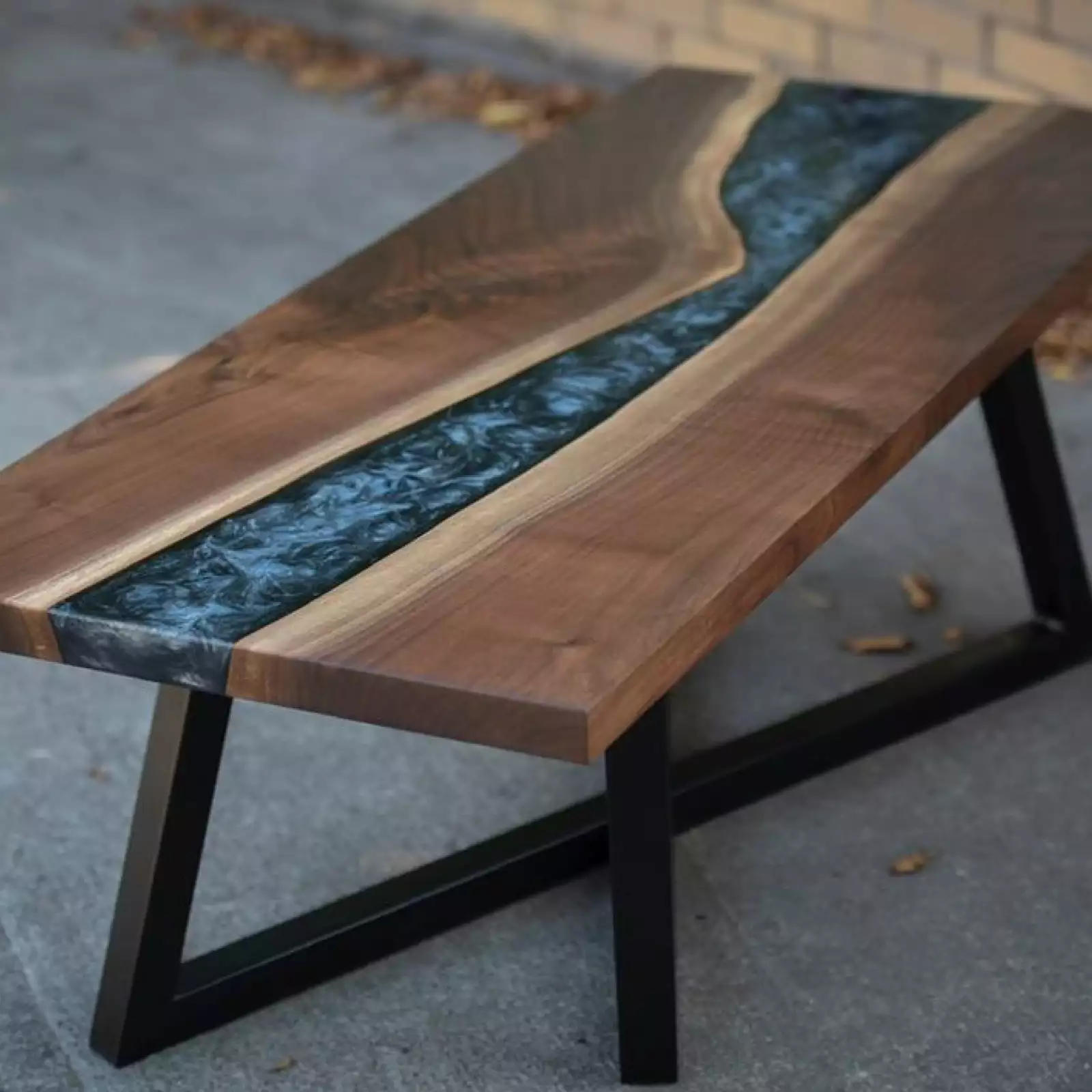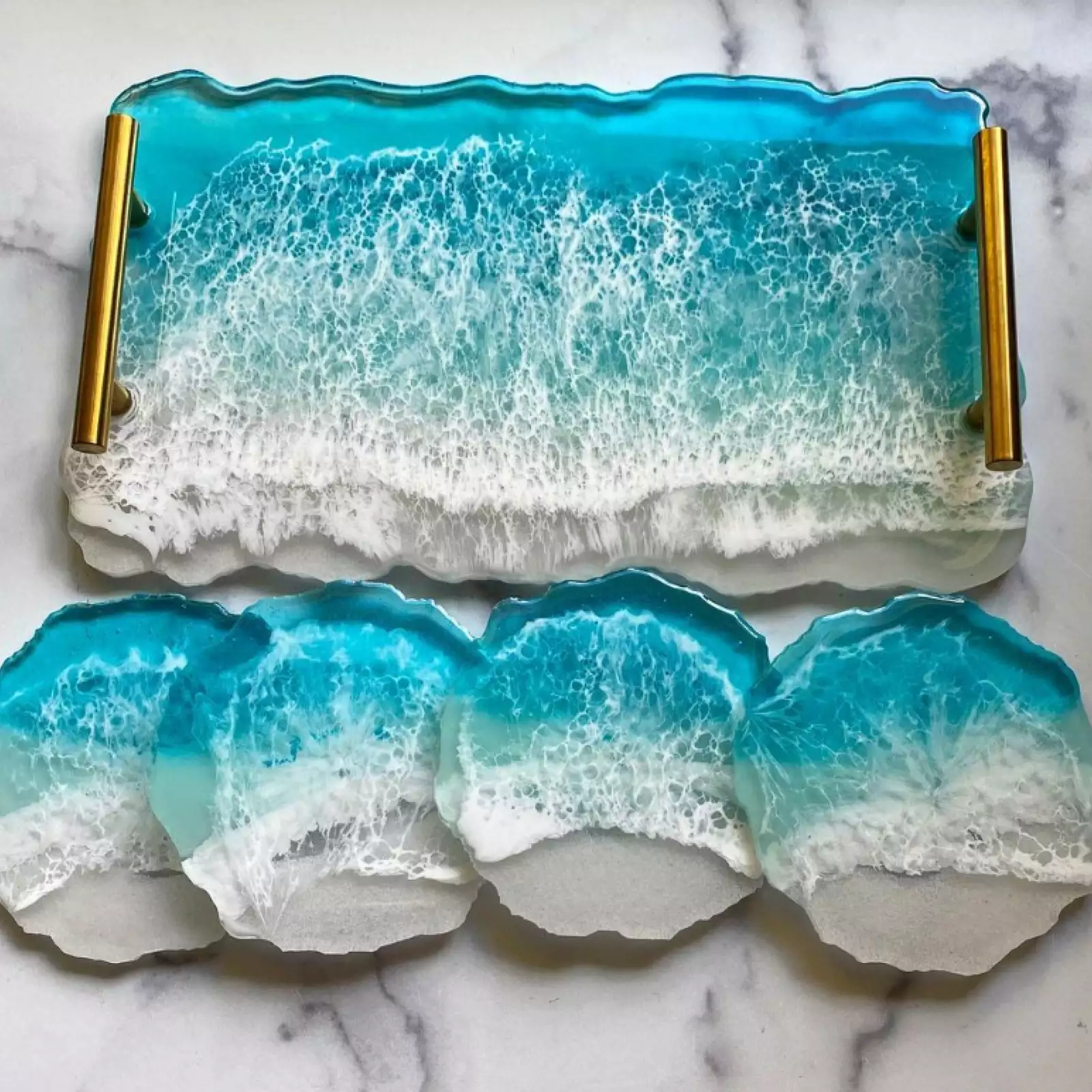

How to use the Epoxy Calculator:
Our epoxy calculator is easy to use!
Simply choose your epoxy formulation, enter your project dimensions, and we’ll let you know how much resin you’ll need to get the job done.
Including how many gallons, fluid ounces, or milliliters of epoxy you need!
If you’d rather do it yourself simply measure the length, width, and height of your pour area by inches, multiply them together (L x W x H), and finally – divide that number by 1.805.
This will give you the fluid ounces needed for your pour! We go into further detail on this below.
Rectangle Project Epoxy Volume Calculator
Round Project Epoxy Volume Calculator
Round Project Epoxy Volume Calculator
Working on a less than square project? Don’t worry – we’ve got your back!
Just measure the diameter of your pour area (in inches), determine how deep you plan to pour your epoxy, and select your formulation.
Easy as that! If you want to do it yourself, check out the details below:
For round or circular applications you will follow these steps:
- First, measure the diameter of your substrate, and divide by 2 to get your radius. (Diameter / 2 = Radius)
- In order to get your volume in cubic inches you will follow this formula: (radius squared) x pi (3.14159265) x (preferred depth of pour)
- Finally, divide that number by 1.805 to convert the cubic inches to U.S. fluid ounces. (Cubic Inches / 1.805 = Fluid Ounces)
- Bonus Tip: To convert ounces to gallons, you can divide by 128. (Fluid Ounces / 128 = Gallons)
Cubic Inches & Weight Ratio Calculators
Want to get down to the nitty gritty and measure your epoxy by weight for maximum precision?
We made it easy with our Epoxy Weight Ratio & Cubic Inches Calculators!
Here’s how to use them:
- First plug in your project dimensions into the Cubic Inches Calculator, select your formulation, and press the Calculate button.
- Next, take the cubic inches and plug them in to our Epoxy Weight Ratio Calculator that is beneath it.
- Feel free to add in a percentage to the Fudge Factor field.
- This will ensure that you always have enough epoxy for your pour.
- It’s always better to have too much than too little!
- Select your epoxy formulation one more time.
- Click Calculate!
Cubic Inches Calculator
Epoxy Weight Ratio Calculator
Special thanks to John Capurso for creating the formula for this calculator!
Check out his work here: www.sawdustgarage.net
How do you calculate the mix ratio by weight?
We design our epoxy systems with a simple ratio for easy mixing and measuring. While our various epoxy systems may have a 1:1 or 2:1 ratio of Base Resin to Curing Agent by volume, the weight ratio is VERY different.
Measuring in a 1:1 or 2:1 ratio by weight will often times resulting in sticky, uncured epoxy in your project.
For this reason, you must use a different formula to calculate the mix ratio by weight.
The formula used to calculate the mix ratio of Base Resin (A Side) to Curing Agent (B Side) side by weight will depend on the epoxy you are using. Use the following ratios to determine the liquid volume needed:
- Liquid Glass® Deep Pour Epoxy: 100 parts Base Resin to 44 parts Curing Agent (100A : 44B).
- Deep Pour 24 Epoxy: 100 parts Base Resin to 43 parts Curing Agent (100A : 43 B).
- Superclear® Table Top Epoxy: 100 parts Base Resin to 83 parts Curing Agent (100A : 83B).
- Designer Art Resin: 100 parts Base Resin to 83 parts Curing Agent (100A : 83B).
- Countertop Epoxy: 100 parts Base Resin to 45 parts Curing Agent (100A : 45B).
FAQ’s
What are the actual formulas used?
The formulas used to calculate the epoxy volume needed, depends on the type of project you are working on.
For most applications (rectangular) you will follow these steps:
- Measure the substrate (or piece) you will be using. Find the length and width in inches, and determine the depth that you would like to pour the epoxy (.25”, 1”, etc.)
- Next multiply the 3 dimensions (L x W x H) together to calculate the volume of the top of your substrate in cubic inches.
- Finally, convert the cubic inch volume to U.S. fluid ounces. To do this you will divide your cubic inches by 1.805. (Cubic Inches / 1.805 = Fluid Ounces)
- Bonus Tip: To convert ounces to gallons, you can divide by 128! (Fluid Ounces / 128 = Gallons)
How do I calculate the weight ratio myself?
To calculate the liquid volume needed of each side for your mix, you will follow these steps:
- First, determine the total amount of epoxy needed.
- Next, take the total weight of epoxy needed and divide by the ratio percentage to calculate the weight of Base Resin need: (Total Weight / Ratio Percentage = A Side)
- Finally, subtract your A side weight from the total weight needed for the project to calculate your amount of Curing Agent: (Total Weight – A Side = B Side).
Especially in smaller mix volumes, it is incredibly important to keep the ratios exact.
Calculating your mix by volume can help to avoid a lot of math and limit the room for error.
Remember that some epoxy may be lost in the calculating stage, so it is a good idea to account for more epoxy than you need for your project.
It is always better to have left over epoxy, rather than to not have enough for your project.
Let your imagination run wild and create!
Our state-of-the-art epoxy formulations allow for endless possibilities! Whether your next project is a river table, a bar-top, or a beautiful piece of art – you can trust that Superclear® Epoxy Systems has products that you can depend on! Don’t just take our word for it, check out what some of the amazing makers in our community have come up with!

